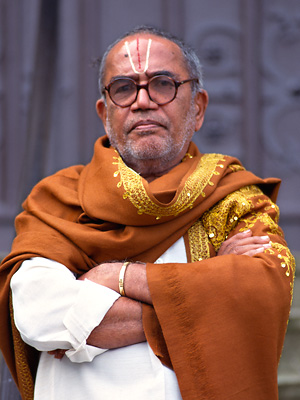alan little’s weblog
who does the asking?
6th December 2005 permanent link
Writing about yoga courses in convents reminds me that months ago I meant to write a longer response to Michael Blowhard’s comment on vedanta:
I've had many experiences with Hinduism, yoga philosophy, and Buddhism when it was as though the speaker or writer were inside my head, discussing far better than I ever could the questions my own mind spends much of its energy chewing over. These religion/philosophies speak to me intuitively as much as they fascinate me intellectually.
To which I replied in a comment:
Hear hear. One of the only times in recent years I can remember being absolutely rapt, fascinated, hanging on every word in a lecture - even wishing I had a tape recorder with me instead of relying on notebook and recollection, which have always served me well enough in the past - was a philosophy course I attended with BNS Iyengar, a senior Indian yoga teacher (not *the* famous elderly Indian yoga teacher Mr Iyengar, the other one. Iyengar is a common name)
This is the gentleman:

BNS Iyengar
Now, in another of his meditation postings, Matt Webb finds himself thinking:
This isn't going to make much sense: It's like there were two "me"s. One was doing the breathing and the quietness, and the other was churning away with thoughts just as much as any hour of the day, only saying things like "oh, that's good, good breathing there".
It absolutely makes sense. In one of those meditation classes, Mr Iyengar told us to focus on visualising a candle flame and “if thoughts come, ask them to leave”. A simple little phrase, but it turns your head inside out a bit if you then suddenly think, “but wait a minute – who’s doing the asking?”. The sudden realisation that there is a me who isn’t just whatever stream of semi-random noise happens to be passing across the surface of my consciousness – so who or what is that, am I, then? This might not be an awareness-altering concept for you, dear reader, but it was for me, and it seems to be the central thing people learn in the beginning stages of all forms of meditative practice: the ability to observe oneself and one’s reactions to things with some degree of detachment, to not be completely caught up all the time in the citta vrtti, the fluctuations of the mind.
Pattabhi Jois, the yoga teacher I studied with in India, famously likes to say “yoga is 99% practice, 1% theory”. No amount of abstract thinking or reading philosophy texts is going to change anything if you don’t get your mat out and focus your mind on your practice on a daily basis. So prior to that course I deliberately avoided all yoga theory & philosophy, and just got on with doing the practice and seeing what happened. I had decided for various reasons of my own that I had lived too much of my life up to that point lost in thinking and verbalising and abstractions, that that in many ways hadn’t done me much good, and that it would be good for me to do something differently. It seemed to work quite well for a couple of years, but then Mr Iyengar convinced me it was time to start catching up on the 1% theory. I went out and bought TKV Desikachar’s Heart of Yoga, which is a fine book containing among other things Desikachar’s commentary on the Yoga Sutras of Patanjali. If one day I ever finish studying and absorbing that (it’s only been four years so far) I may move on to other texts.
It’s interesting to see two senior teachers of the same form of yoga with such different approaches. Pattabhi Jois’s approach is very much to teach students the physical aspects of the practice, encourage them to practice those diligently and let the breath control, mind control, meditative aspects arise naturally out of that over time. He does occasionally come out with nuggets of theory & philosophy wisdom in front of groups of students, but doesn’t teach anything like formal philosophy classes. His English, in any case, is limited.
Mr Iyengar speaks much better English, and also very much gave the impression that the physical practice is just matter of “ok, here are some asanas we have to do in order to be able to sit properly. Good. Now we can get onto the interesting stuff”. Which for him seems to be philosophy and meditation classes. (He can teach the physical stuff if he feels like it. I know this because I know a couple of his western students who have quite impressive advanced practices)
Now I think of it, this was also the yoga course where I finally learned how to approach lotus position safely, after two years of hurting my knees by doing it wrong. All in all a week well spent.
related entries: Yoga
all text and images © 2003–2008